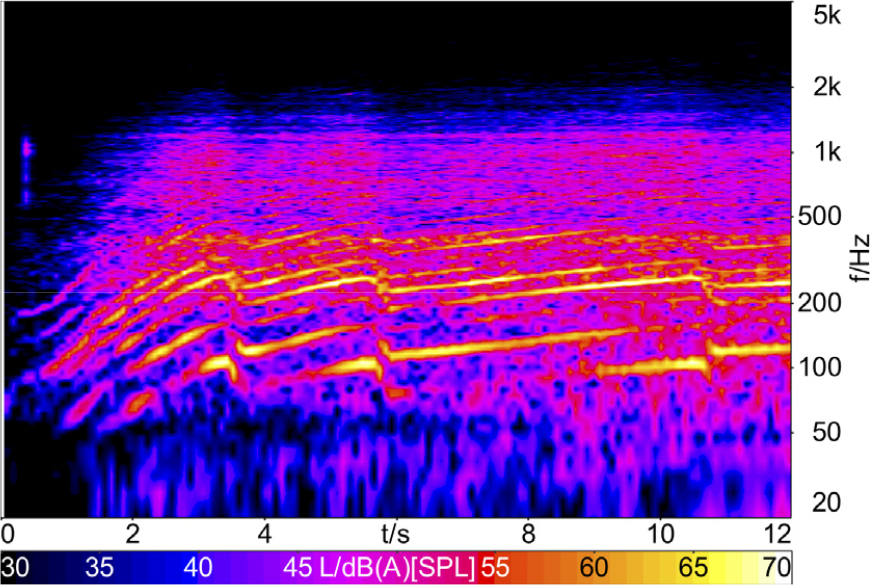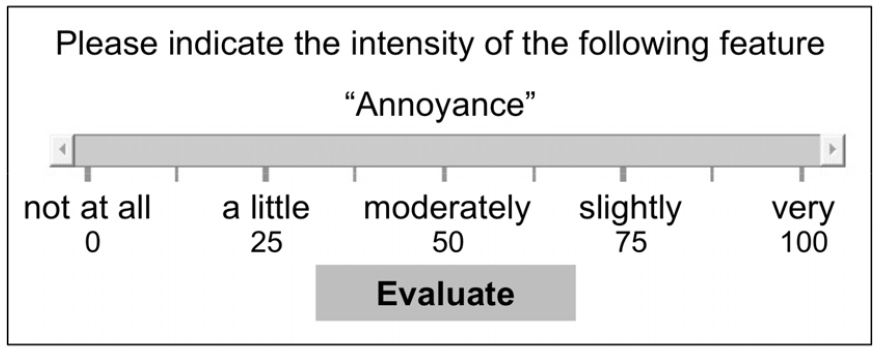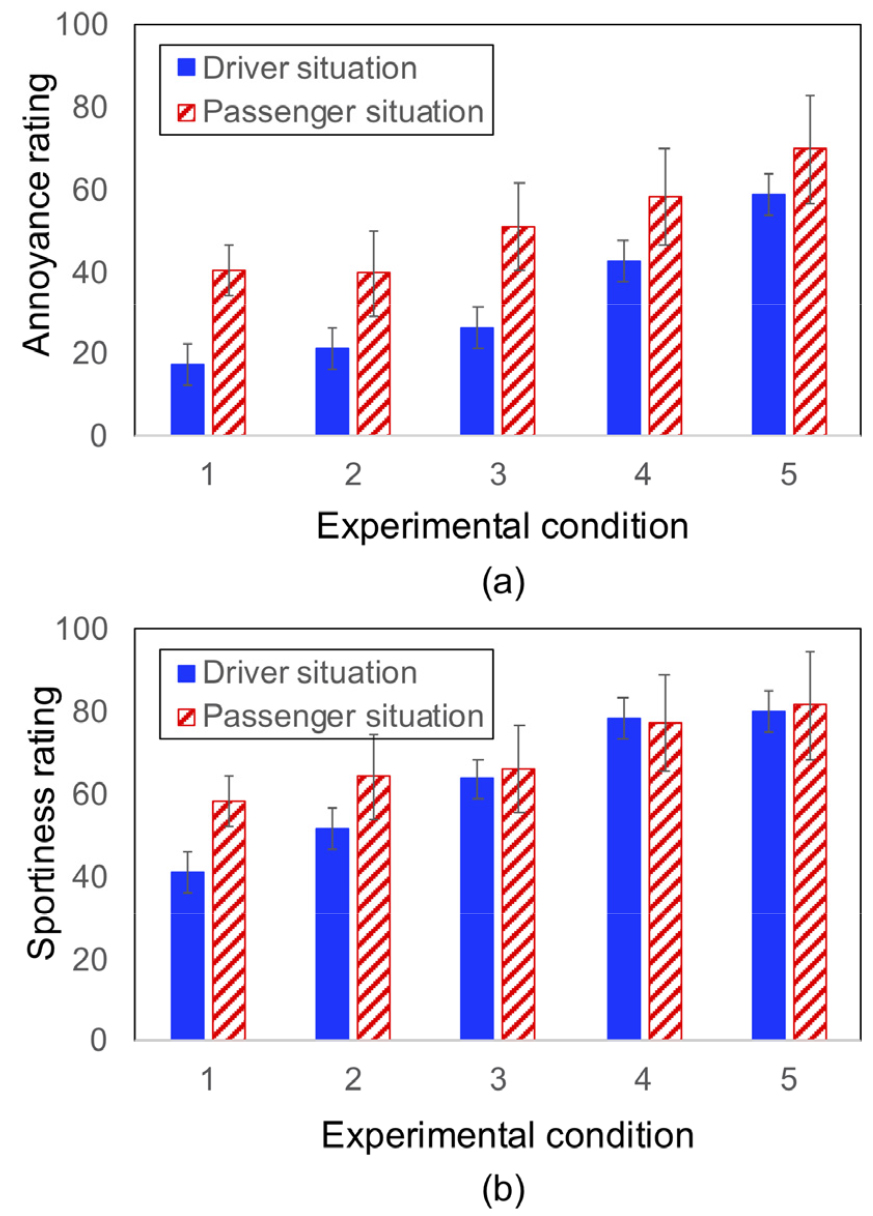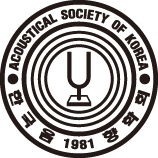I. Introduction
The sound quality of a vehicle is an important attribute that determines the marketability of a vehicle. In particular, the engine sound during acceleration is a significant factor of affective driving quality. Furthermore, it can represent the identity of the brand and vehicle model.[1] Therefore, many studies have been focused on the subjective preference of the engine sound,[2,3] development of the sound quality index,[4] and goal setting for the acceleration sound.[5] Meanwhile, the designed engine sound can be effectively realized through active control in the modern vehicle acoustic field. In particular, the Active Sound Design (ASD) technology has been widely applied to enhance the sound character of the vehicle.[6] The ASD system receives the engine speed via high-speed Controller Area Network (CAN)-BUS and generates an engine sound corresponding to engine orders.[6] The generated engine sound is reproduced through speakers of the vehicles. The sound image of the generated sound can be set at the engine position in front of the vehicle using the audio system. Therefore, sounds of almost the same volume are reproduced from the driver and the front passenger positions. A driver who directly controls the accelerator pedal and a passenger who is simply in the vehicle may perceive the acceleration sound differently. In the ASD technology so far, studies on tuning parameters related to the dynamic performance of the vehicle or sound design methodology have been mainly presented.[7] However, it is difficult to find a study on the engine sound perception according to whether driving or not. This study aims to investigate the perceptual difference of the sportiness and annoyance about engine sounds during acceleration between driver and passenger. We have conducted the subjective evaluation test to derive the perceptual differences using a multimodality reproduction simulator.
II. Experimental setup
This study used a driving simulator to prevent judgment errors caused by uncontrolled factors such as differences in vehicle acceleration patterns other than driving sounds. The driving simulator from Dresden University of Technology used in this study is a multimodal reproduction system that can reproduce vehicle motion, vibration, driving image, and driving sound.[8] For the simulator- based evaluation, driving data was measured first. The measurement system was set up to measure sensory factors corresponding to sight, hearing, tactile sense, and kinesthetic sensation. A camcorder was installed inside the vehicle to record the driving image. The acceleration sound was measured at the driver’s seat position using a 1/2-inch microphone, and the longitudinal acceleration of the vehicle was measured to reproduce the longitudinal motion. Moreover, the three-axis pad-type accelerometer was used to measure the vibration at the driver’s seat position. The evaluation vehicle was a six-cylinder sporty sedan with 370 PS. Driving data was measured under the condition of wide-open throttle in the drive gear. Fig. 1 shows the spectrogram of the measured interior sound. The measured driving data was implemented to the multimodality simulator,[8] as shown in Fig. 2. The driving image was reproduced using a projector, and the acceleration sound was reproduced through the wave field synthesis system used 468 speakers. Acceleration sensation was reproduced by using a six-degree-of-freedom hexapod. Furthermore, the vibration was reproduced using a shaker installed on the seat. Motion, vibration, and image were used under the same conditions. Based on the 74 dB(A) measured in the vehicle, five types of sound sources were designed by increasing and decreasing the level in 3 dB step to evaluate the difference in perception of the sportiness of the acceleration sound. In total, fifteen subjects (male: 10, female: 5) between 18 and 40 years old (median: 26.2) with normal hearing ability participated in experiments. Participants who had no technical background were trained on the evaluation scenario before the test. For the same evaluator, two driving situations as the roles of driver and passenger were evaluated in terms of annoyance and sportiness. The Rohrmann scale from 0 to 100, were employed, as shown in Fig. 3.[9]
III. Subjective evaluation results
The evaluation result of annoyance and sportiness perception according to the role of a drive and passenger was illustrated in Fig. 4. In Fig. 4, the black box and hatched black box represent the mean score for the situation of the driver and passenger, respectively. Moreover, the bar implies the 95 % confidence interval. In Fig. 4, experiment condition 3 implies the original sound. It was found that the annoyance score was higher in the passenger situation than in the driver for all five conditions as shown in Fig. 4 (a). The difference in the annoyance score for each evaluation condition 23.0 points, 18.3 points, 24.4 points, 15.5 points, and 11.0 points for the cases of experimental conditions 1 to 5. It was found that there was a significant difference in perception of annoyance at a relatively low noise level. Since the driver would like to drive and actively accelerate the car, the acceleration sound could be perceived as driving feedback. Thus, the driver can perceive the acceleration sound relatively less annoyingly than the passenger. Furthermore, sensitivity analysis was conducted to investigate the rate of change in perceived intensity according to level change. Linear regression models, as shown in Eqs. (1) and (2), were constructed to analyze the sensitivity to level changes, and the slopes of the regression models were compared. The coefficient of determination of both regression equations was 0.94. Comparing the slope of the regression equation, it can be seen that the passengers is 35 % less sensitive to level increase than the drivers.
Meanwhile, the sportiness score was also higher in the passenger situation than in the driver case like annoyance perception, as shown in Fig. 4 (b). In the third experimental condition, the reference level, the score for sportiness was similar to the driver’s situation and the passenger’s situation, 63.4 points and 64.7 points, respectively. However, it can be seen that at relatively low noise levels such as experimental conditions 1 and 2, the passenger perceived the acceleration sound sportier than the driver at the same noise. Moreover, as a result of comparing slopes by constructing the linear regression model as shown in Eqs. (3) and (4), it can be seen that the sensitivity of the sportiness to the noise level change is 74 % greater in the driver’s situation than the passenger’s situation.
Since the driver plays an active role at the driving, the driver can perceive the acceleration sound as feedback on her/his driving. Accordingly, it is considered that the perceptual difference has occurred. Therefore, to satisfy acceleration sounds for both the driver and passenger, a sound design strategy is appropriate in which a reference sound level is set from a passenger’s annoyance aspect then increase the level at the driver’s position properly.
IV. Conclusions
This paper presented the perceptual difference of annoyance and sportiness according to the acceleration sound between the situation of the driver and passenger. The multimodal reproduction system was employed for the subjective evaluation. From the experiment result, the significant difference in perception between driver and passenger was found through the subjective evaluation. It was found that the driver perceives acceleration sounds less annoying than the passenger since the driver has a will to drive. Meanwhile, the passenger has perceived the acceleration sound more sportily than the driver at a relatively low sound level. Moreover, the sensitivity to the level change of the annoyance to the acceleration sound was found to be 35 % greater for the driver than the passenger. Meanwhile, the sensitivity to the level change of sportiness was found to be 74 % greater for the driver than the passenger. In a subsequent study, we plan to evaluate the perceptual difference in vehicle level by differencing the acceleration level between the driver and passenger using the ASD.








